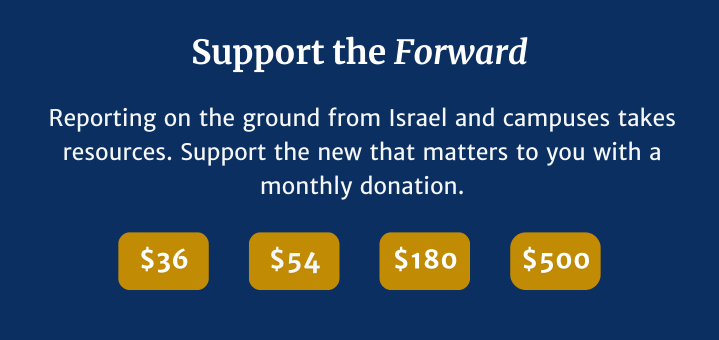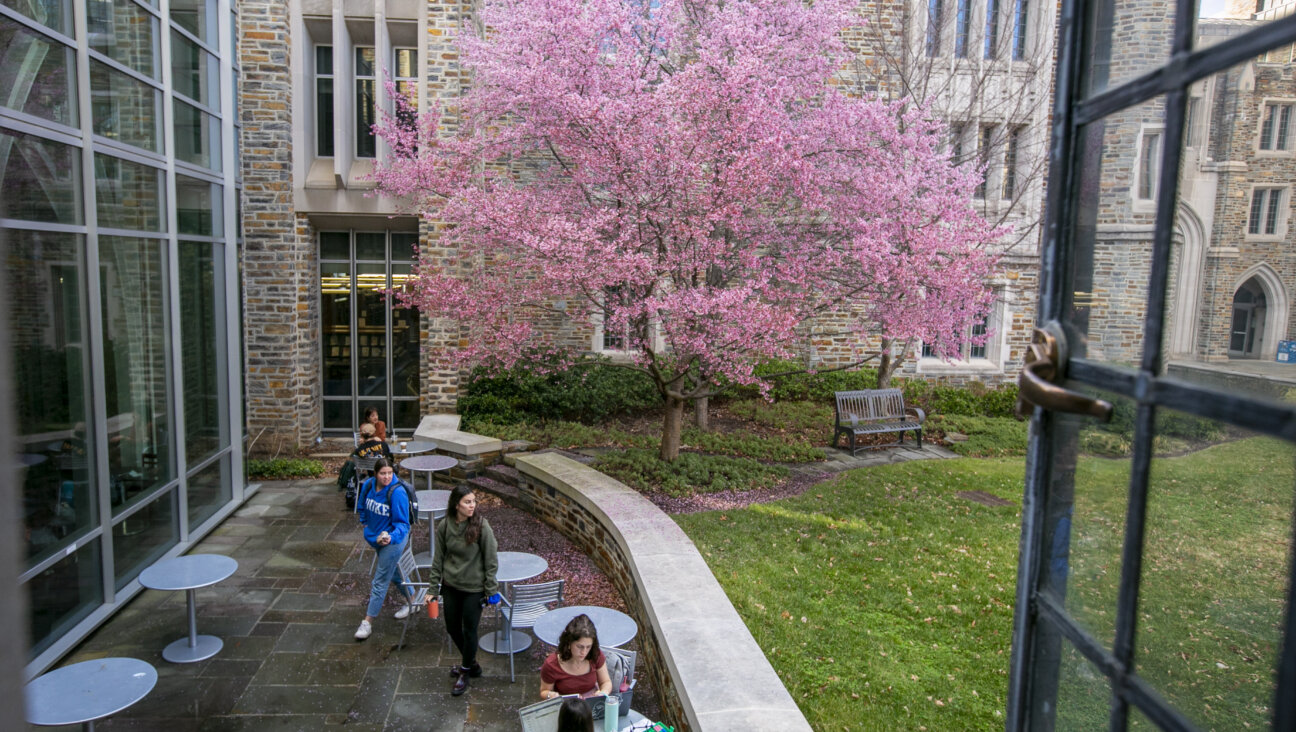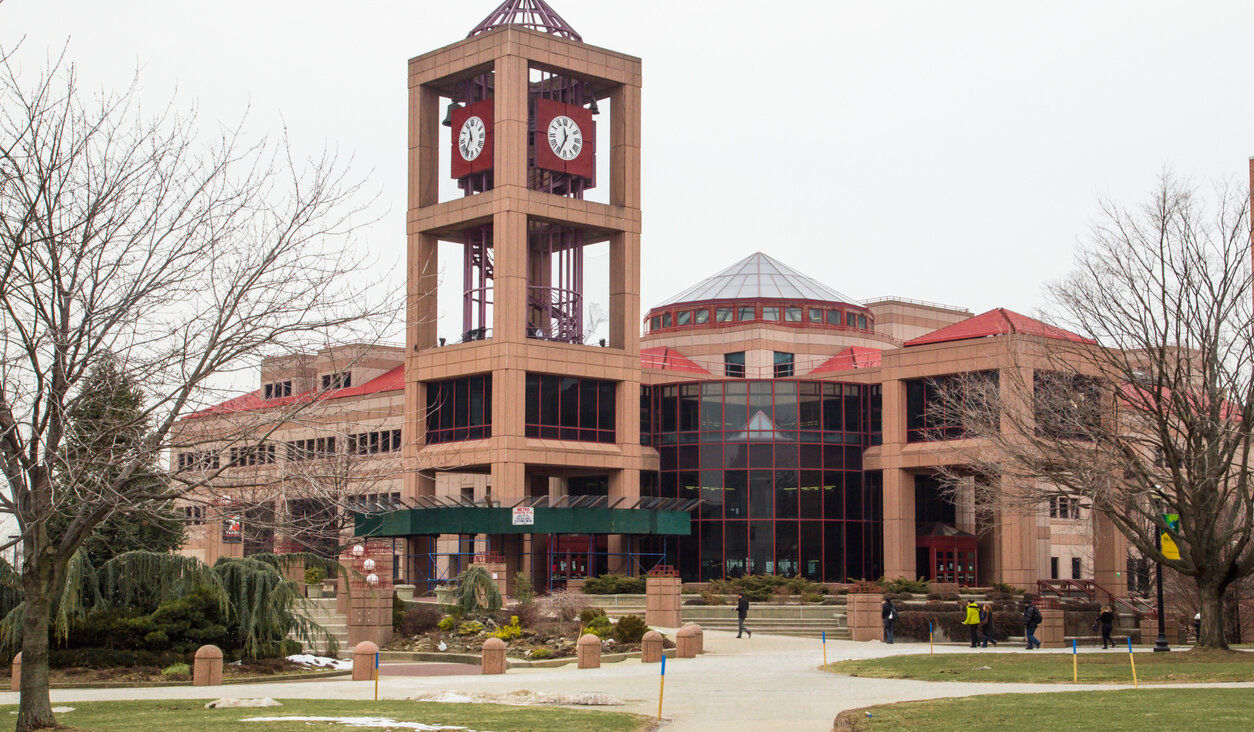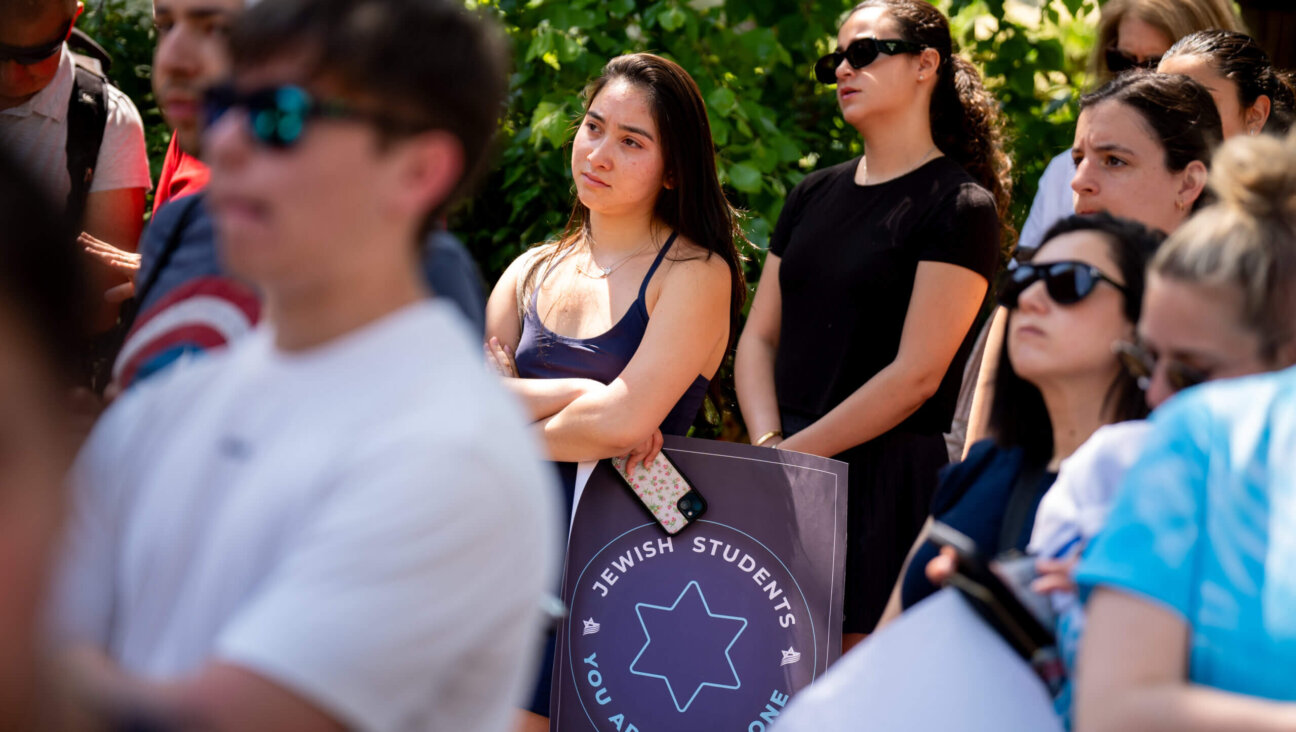Meet the Jewish duo behind Australia’s hottest news service for millennials
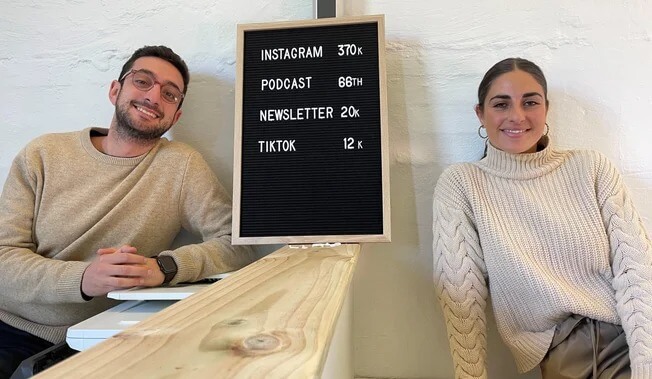
The Daily Aus co-founders Sam Koslowski, left, and Zara Seidler. Photo by Judy Maltz
This article originally appeared on Haaretz, and was reprinted here with permission. Sign up here to get Haaretz’s free Daily Brief newsletter delivered to your inbox.
SYDNEY – Among their friends, Sam Koslowski and Zara Seidler were always known as “news nerds” – the kind of people you went to if you wanted a quick update on what was happening in the world.
“I’d have friends who’d call me when they were about to go on a date and ask me to explain something in the news so that they sounded smart,” says Koslowski, the male half of this 20-something entrepreneurial duo.
He found there was no local news service catering to young audiences that he felt comfortable recommending to friends: “Everything out there was very focused on celebrities and, when they did cover politics, it was hyper-opinionated and hyper-partisan.”
About five years ago, while working as a corporate lawyer, Koslowski began thinking that maybe he could transform this great talent he had for breaking down the news into a lucrative venture. He decided to publish a post on his LinkedIn page saying he had an idea for a media business, inviting anyone interested to join him.
He got one response. It came from Seidler, who was working on a political campaign at the time. Although they both grew up in Sydney’s rather tight-knit Jewish community, are both graduates of the city’s Jewish day-school system, are both grandchildren of Holocaust survivors (Koslowski even served as leader of March of the Living in Australia for several years), and both describe themselves as proud cultural Jews, they had never met before.
“We went for coffee a few days later, and we’ve been best friends and business partners ever since,” says Koslowski, 27.
The Daily Aus bills itself as a social-first news source, meaning it creates content that is designed for and distributed exclusively on social media – in this particular case, Instagram. With its 370,000 followers, The Daily Aus is the biggest youth media-focused Instagram page in Australia.
“Our goal is to meet young people where they are, and today they’re on social media,” says Seidler, 25.
The idea behind the service, she says, is to break down the news into digestible nuggets, while providing the context often missing in traditional media outlets.
“In this country, interest rates have increased considerably – but nobody our age knows what interest rates are or what the central bank is, so they don’t really understand the implications,” says Seidler. “We see our job as explaining why this is important.”
They also sought to provide millennials with something more attuned to their news consumption habits.
“We know that young people, for the most part, aren’t actively consuming news these days,” Seidler explains. “It’s not like there’s this big hike in news subscriptions among this demographic. So we wanted them to have a passive experience. In other words, while they have their social media open and are looking at their cousin’s bar mitzvah photos, they can move on to reading something in the news that we’ve provided – and it’s all done in this very nonintrusive manner.”
No celebrities or fashion
In order not to compete with what already exists in the Australian youth media market, The Daily Aus steers clear of news related to celebrities, fashion, movies and sports, focusing instead on what Koslowski terms “hard news.”
“We choose our stories based on what we think people need to know,” he says.
They post about seven to eight news stories a day, mostly with an Australian focus. Because Instagram limits each story to 10 slides, rarely does an individual news item exceed more than a few hundred words. And herein lies the big challenge, according to Koslowski: “When we’re trying to distill the modern history of Russia and provide some historical context to the invasion of Ukraine, that’s much harder to do in 400 words than it is in 4,000.”
Their Instagram page, he says, is “the front door to get people into the universe we’re creating.” But in addition to this main platform, The Daily Aus also publishes a newsletter every day, providing readers with the option of choosing between a 10-second, one-minute or three-minute version of “What You Need to Know Today.” The duo also puts out a daily 10-to-15-minute-long podcast.
Just last month, the pair completed a second round of funding from private investors. They raised 1.1 million Australian dollars ($740,000), on top of the AU$500,000 they brought in during the first round, which they hope will help them reach their goal of 1 million followers in Australia. They have also just been featured on Forbes’ prestigious “30 Under 30 Asia List 2022.”
For the first few years, it was just a two-person news service. And even then, just barely. Koslowski and Seidler were still students – at the University of New South Wales and University of Sydney, respectively – when they started posting their millennial-friendly news stories. They would continue doing so after landing their first jobs fresh out of school.
Only after they completed their first fundraising round 18 months ago did they decide it was time to stop everything else and devote themselves fully to their fast-growing venture. That was when they also began hiring full-time staff to help out.
Up until early 2020, just before the onset of the pandemic, The Daily Aus barely had a few thousand followers. By the end of the first year of COVID, they had close to 50,000. “And it hasn’t stopped growing since,” says Koslowski.
Explaining this huge uptick in engagement, his business partner says: “Suddenly everyone had a reason to care about what was happening in the news. So, between our day jobs, Sam and I just started uploading stories about [COVID] restrictions and case numbers – and we found ourselves becoming the go-to people for young Australians wanting to get a bite of news that wasn’t overwhelming during a very overwhelming time.”
Big win
Their audience is predominantly under 35, more than 90 percent Australia-based (the remainder are presumed to be Australian expats) and predominantly female (80 percent). “In our early days, much of our growth came from a lot of influencers who were sharing our page on their networks, and these were predominantly women,” says Seidler. Based on surveys, 70 percent of their audience use The Daily Aus as their primary news source.
The Daily Aus now has a full-time staff of nine, its most recent – as well as youngest – hire barely 19. Having outgrown their old office, they moved last month to a new space in the trendy Surry Hills neighborhood. This expansion has allowed them to transition from aggregating news from other sources to doing some of their own original reporting. In fact, a week before the May general election, Koslowski and Seidler landed a 40-minute, sit-down interview with Labor Party leader Anthony Albanese, who has since become prime minister.
“That was a big win for us,” recounts Seidler. “We spoke with him predominantly about the issues that concern young people – climate change, housing prices and our relations with the indigenous people of this country.”
During a recent visit to their new office space, these media entrepreneurs could be observed starting off their workday reviewing reading engagement figures from the previous day’s stories. The one about the Israeli government collapsing hadn’t been “particularly loved,” according to Seidler.
“It’s pretty hard to understand Israeli politics from here,” she explains, “and it probably wasn’t of interest to a lot of our audience – even though that definitely isn’t a consideration for us if we believe something is important for people to know.”
The story that did exceptionally well, by contrast, was about transgender women being barred from elite swimming. It was also the subject of that morning’s podcast.
These two 20-somethings are now setting their sights overseas, with plans to transplant their model to Britain. “It’s the most similar market to ours,” says Seidler, “and if we can make it there, it would be proof that this concept can also expand and exist in a place that isn’t here.”

I hope you appreciated this article. Before you go, I’d like to ask you to please support the Forward’s award-winning, nonprofit journalism during this critical time.
Now more than ever, American Jews need independent news they can trust, with reporting driven by truth, not ideology. We serve you, not any ideological agenda.
At a time when other newsrooms are closing or cutting back, the Forward has removed its paywall and invested additional resources to report on the ground from Israel and around the U.S. on the impact of the war, rising antisemitism and the protests on college campuses.
Readers like you make it all possible. Support our work by becoming a Forward Member and connect with our journalism and your community.
Make a gift of any size and become a Forward member today. You’ll support our mission to tell the American Jewish story fully and fairly.
— Rachel Fishman Feddersen, Publisher and CEO
Join our mission to tell the Jewish story fully and fairly.






